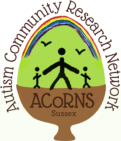On Thursday 26th October we held the first reading group of this academic year with the topic of Autism Disclosure. I felt this was a highly relevant topic that could bring an interesting discussion- and it did. Prior to the group session we had sent out two articles for suggested reading, but these were not necessary to read before attending. Personal experience was a large focus point for those who attended the group showing just how much disclosure is relevant to everyday life, whether this be in social situations (like the group itself) or in a workplace setting.
What did we decide?
Disclosure of an autism diagnosis is a truly personal decision. Much like everything else in life there are two sides to the coin. The decision to disclose is like making a cost-benefit analysis to be able to make an informed choice. This felt like an appropriate summary of the balancing act choosing to disclose can feel like.
The Positives
A large factor for choosing to disclose was unsurprisingly being able to access reasonable adjustments if needed. While this can depend on personal need, the group felt this was a highly important factor. Being able to ask for the support you need is key for a healthy work place environment and personal productivity. Alongside this, by disclosing you have the opportunity for people to understand you better. Sometimes making people aware of a disability means they feel like they can ask questions to understand it more and in turn this can provide more effective peer support. For instance, it might bring a greater acceptance of autistic traits such as stimming. As they say, education is key – how will people know if they don’t learn?
The negatives
Like a lot of important choices, disclosure can be surrounded with fear and anxiety. Largely this stems from a worry of prejudice people may have against autism. Much of the stereotyping about autism occurs in the media. People tend to get their information from the media if they have no personal experience with autistic individuals. Facing misrepresentation can be daunting especially when you are afraid of potentially negative responses.
Another prominent factor is that in order to receive support you often have to disclose. This can mean needing an official diagnosis, and with current waitlists this can take years. This can be a big problem for many people, including those who wish not to seek a diagnosis. Interestingly an attendee pointed out that there is a glaring issue with diagnostic documents- they vary greatly in content quality and length. This links in with the idea of blanket disclosure, we discussed how that could be unhelpful due to varying needs. A persons need can be highly context-dependent: what works at home may not work in an office. With diagnostic papers, some are shorter than others, some are just a letter to state the diagnosis and others have lists of recommendations. Those in attendance wondered if a strengths and needs document running alongside the autism diagnosis might be beneficial instead of having to repeatedly express ones needs. The organisation ‘My Employment Passport’ runs a course about employability to support young people with additional needs. This is something that could also provide aid within the work place alongside training courses for employers surrounding disabilities, which could benefit everyone. One example of how a strengths-based document can be helpful for an autistic individual was the Our Stories Project run by ACoRNS. The project had a positive result when implemented in the Time for Autism module at Brighton Sussex Medical School.
Given the current climate within England, there are also other factors such as financial cost for aids. Not everyone can afford their own and not every workplace wants to provide them. Not everyone wants to seek a diagnosis, which is a personal choice. A lot of considerations are taken when making the choice to disclose. This makes the balancing act between the positives and negatives of disclosure make the choice highly individualised and personal.
Article Links
- Autism disclosure – The decisions autistic adults make – Farsinejad, A., Russell, A. and Butler, 2022https://www.sciencedirect.com/science/article/pii/S175094672200023X?via%3Dihub.
-
- Farsinejad, A., Russell, A. and Butler, C., 2022. Autism disclosure–the decisions autistic adults make. Research in Autism Spectrum Disorders, 93, p.101936. 4
-
- Real-life autism disclosures are complex – and reactions can range from dismissal to celebration – The Conversationhttps://theconversation.com/real-life-autism-disclosures-are-complex-and-reactions-can-range-from-dismissal-to-celebration-199869
